Juan Diego Gaucin (Photo by: Vaughn Wheat)
Not many people have the opportunity to stand in the Nelson-Atkins Museum of Art beside the artist who created the artwork displayed on its walls. On April 11, dozens of JCCC students, faculty, and members of the public surrounded Juan Diego Gaucin as he discussed each of his five paintings displayed in the Nelson-Atkins. Several of the students in attendance were current or former students of Gaucin, who has taught painting and drawing at JCCC since 2021.
Last year, Charlotte Street named Gaucin as a 2024 Artist Fellow. The award comes with a $10,000 cash prize and the opportunity to be featured in an exhibition in the Nelson-Atkins Museum of Art, alongside the other two award recipients, Kevin Demery and Aleah Washington.
Gaucin was born in Villa Insurgentes, Zacatecas, Mexico. His family immigrated to the United States in 1988, when Gaucin was three years old, and lived in Chicago for several years. He obtained two bachelor’s degrees from Pittsburg State University, one in fine arts and one in chemistry, before attending grad school at KU. Now, he teaches painting and drawing at JCCC as an adjunct assistant professor, and design, painting, and drawing at Haskell Indian Nations University.
Despite drawing as a child, often in the margins of his notebooks, Gaucin didn’t always plan to be an artist. He was studying engineering at Pittsburg State University when he took a drawing course for the first time. It was supposed to help Gaucin push through the burnout of his 16 hours of math and science credits, but, “it just clicked.” He changed his major and decided he would become an artist.
“You know you’re an artist if you know you’re going to continue to create art even if it doesn’t sell, even if it’s not for a class, and you just do it for your own sake because it’s something you need to do,” Gaucin says.
Gaucin submitted an application to the Charlotte Street Foundation without thinking twice about it. He didn’t expect to win, given how competitive such awards can be, and had little emotional investment in the award itself. The application was free and didn’t require applicants to have a degree. Gaucin has also been part of Charlotte Street’s Studio Residency program since 2023, which grants him a two-year residency in one of Charlotte Street’s studio spaces.
The exhibition at the Nelson-Atkins Museum of Art features five of Gaucin’s paintings – a series titled Para una vida mejor/For a Better Life – alongside works by the other two Charlotte Street Visual Artist Fellows. It runs from November 2024 to August 2025.
Gaucin’s paintings illuminate the experiences of immigrants. Many depict the hardships and uncertainties immigrants face; family separation, dangerous border crossings, and a border security system that shows little compassion for their circumstances. Others shine with the hope for a better life that people are searching for when they immigrate to the United States.
Each painting took Gaucin between 160-200 hours to create. He only had eight months to prepare his series for the Nelson’s exhibition on top of teaching five classes, which is why “Faith in a Dream” and “Doubts and Anxiety” are unfinished.
Gaucin’s art style is influenced by Mexican muralism, modernism, and abstract expressionism. Aaron Douglas is particularly influential to Gaucin, who specifically cites “From Slavery to Reconstruction” as an inspiring piece. Gaucin says his desire to “cram” his paintings full of life and activity is due in part to the works of Peter Paul Rubens.
Gaucin’s use of vibrant, unrealistic colors for human skin is intended to reflect both a departure from reality and universalize the experiences of the migrants in his paintings. Still, many of the figures in Gaucin’s works are real people, referenced from photos Gaucin had seen in news articles about immigration.
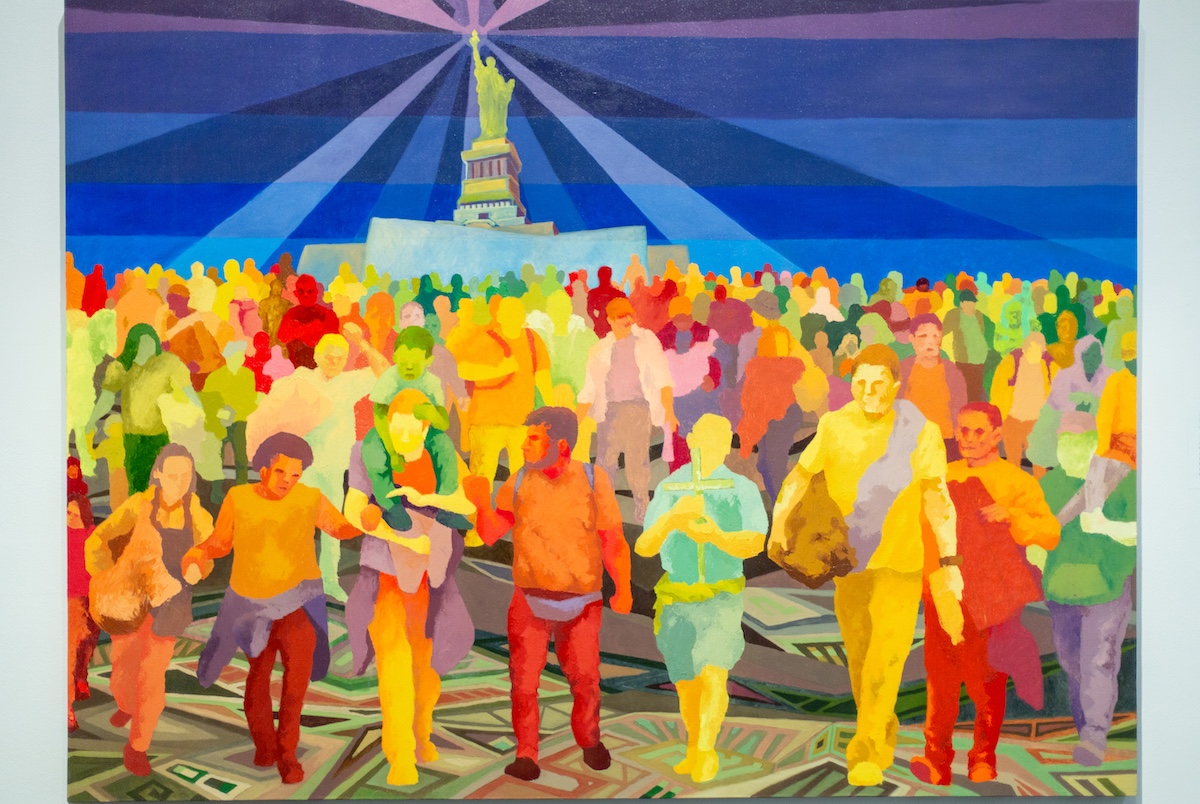
Juan Diego Gaucin, “Faith in a Dream” (2024), oil on canvas (Photo by Vaughn Wheat)
“Faith in a Dream” brings the hopes of migrants to life. It represents the diversity of experiences and cultures that immigration has brought to the United States and the joy of finding the better life that many migrants seek. The Statue of Liberty, a long-standing symbol of the American Dream, looks over the sprawling mass of figures. Gaucin hopes to remind the viewer of the many opportunities and privileges Americans enjoy and often take for granted – opportunities immigrants seek as well.
“These things aren’t guaranteed,” Gaucin says. “We do, to some degree, have to fight and wrestle to keep these things alive.”
Gaucin’s spirituality and opposition to Christian nationalism play into “Faith in a Dream” with the figure holding the cross in the foreground. “A lot of Christianity is about the refugee, the migrant,” Gaucin says. He hopes the inclusion of the cross will remind people cruelty towards people in need, namely immigrants, goes against the core values of Christianity.
“Faith in a Dream” is unfinished, and Gaucin plans to complete it after the Nelson-Atkins exhibition closes. He says he plans to flesh out more of the sky, but isn’t sure yet what will be added.

Juan Diego Gaucin, “Doubts and Anxiety” (2024), oil on canvas (Photo by Vaughn Wheat)
“Doubts and Anxiety” was inspired by dreams Gaucin and his family had while staying in a hotel in El Paso, Texas he believes was haunted.
“They were all the same, of people who had been murdered in that room or in that hotel, like disembodied heads,” Gaucin says.
Gaucin says he hopes the viewer will question their role when they make eye contact with the frightened figures in this piece.
“Are you the border patrol and they’re staring at you in abject terror? Or is there a spirit that’s directly in front of them that they’re terrified of?”
The faces coming out of the floor display the incorporeal nature of spirits. “You know, physical material isn’t a limitation,” Gaucin says. “So, like, they could be spying on you with just the top of their head out of the floorboards.” The faces also incorporate the idea of being buried in the desert.
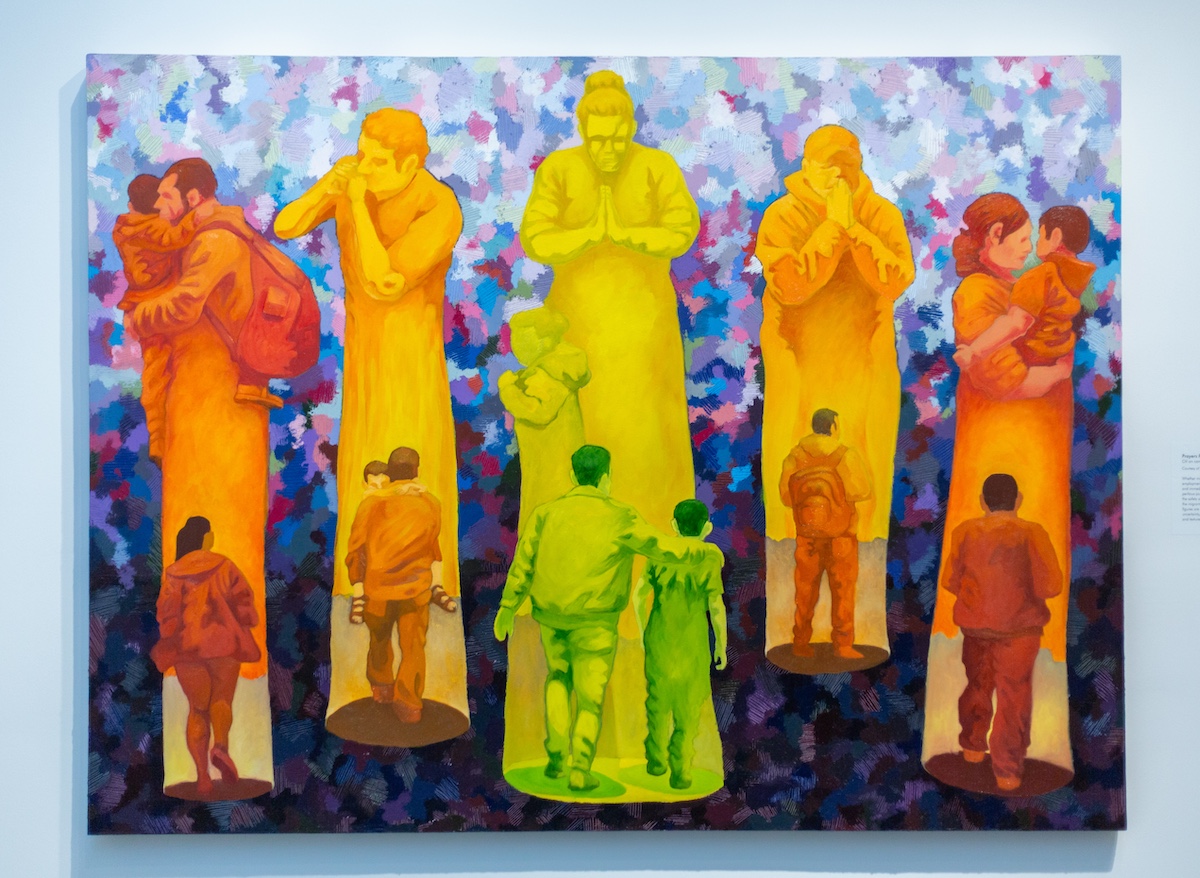
Juan Diego Gaucin, “Prayers for Safety” (2024), oil on canvas (Photo by Vaughn Wheat)
In “Prayers for Safety,” Gaucin depicts the prayers of loved ones as guiding lights for migrants on their journeys. Gaucin wanted the definition of “prayer” for this piece to be nonspecific and non denominational. In his mind, a prayer can be religious and directed to a deity, or classified only as a feeling of longing and desire. The prayers shield the migrant figures from the difficulties of migration, depicted as the multicolored background of the painting.
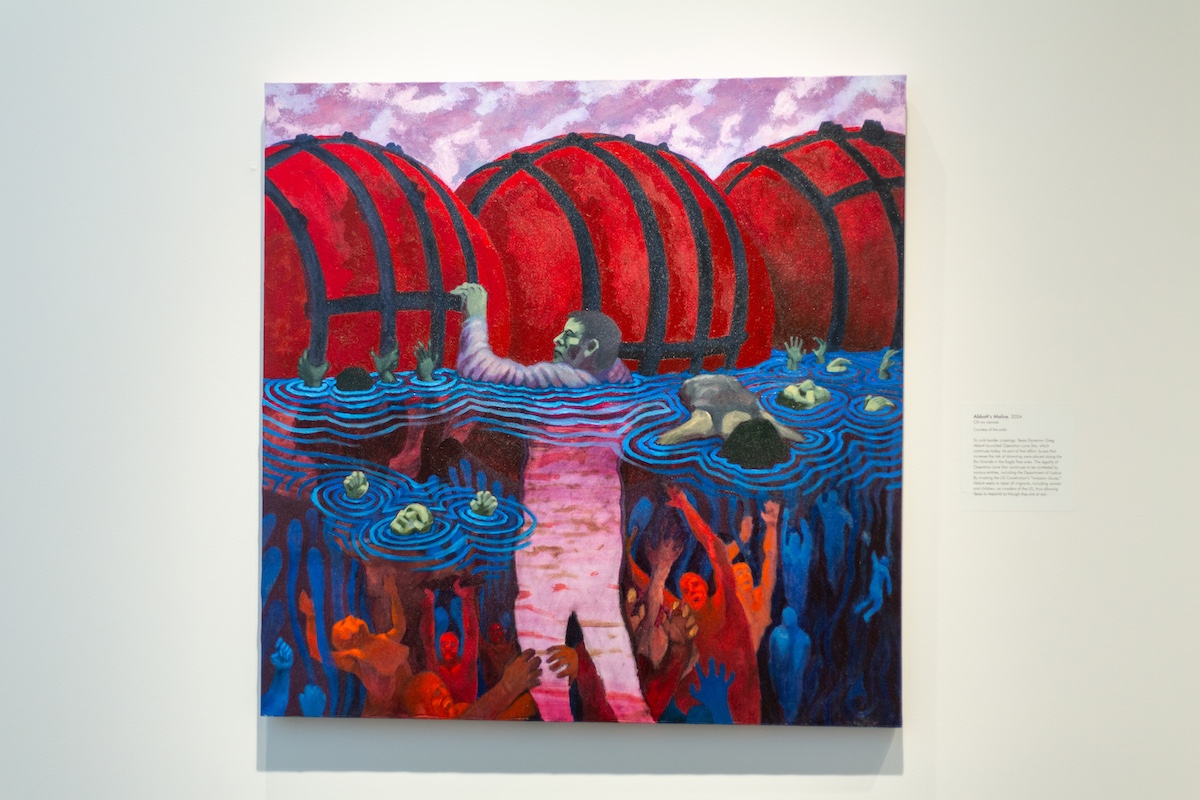
Juan Diego Gaucin, “Abbott’s Malice” (2024), oil on canvas (Photo by Vaughn Wheat)
“Abbott’s Malice” depicts a floating border wall in the Rio Grande. The wall was constructed in 2021 as part of Texas governor Greg Abbott’s Operation Lone Star, designed to curb immigration into Texas from Mexico. A 1,000-foot-long chain of spinning orange buoys divides the Rio Grande and serrated metal discs sit between buoys, hazardous to any migrants that may attempt to climb over them. Thick cables, nets, and underwater concrete bases prevent crossing beneath the buoys. Along the banks of the river on the Texas side, coils of razor wire sit to cut migrants that make it out of the river.
In 2023, not long after the Biden administration ordered Abbott to remove the floating wall, two bodies were found stuck in the buoys. Many other people, including a mother and her children in 2024, have drowned attempting to cross the Rio Grande into Texas.
In “Abbott’s Malice”, the spirits of migrants that have died on the border attempt to pull another migrant into the water with them. “Wrathful, spiteful, hungry ghosts,” Gaucin says, are the red spirits.
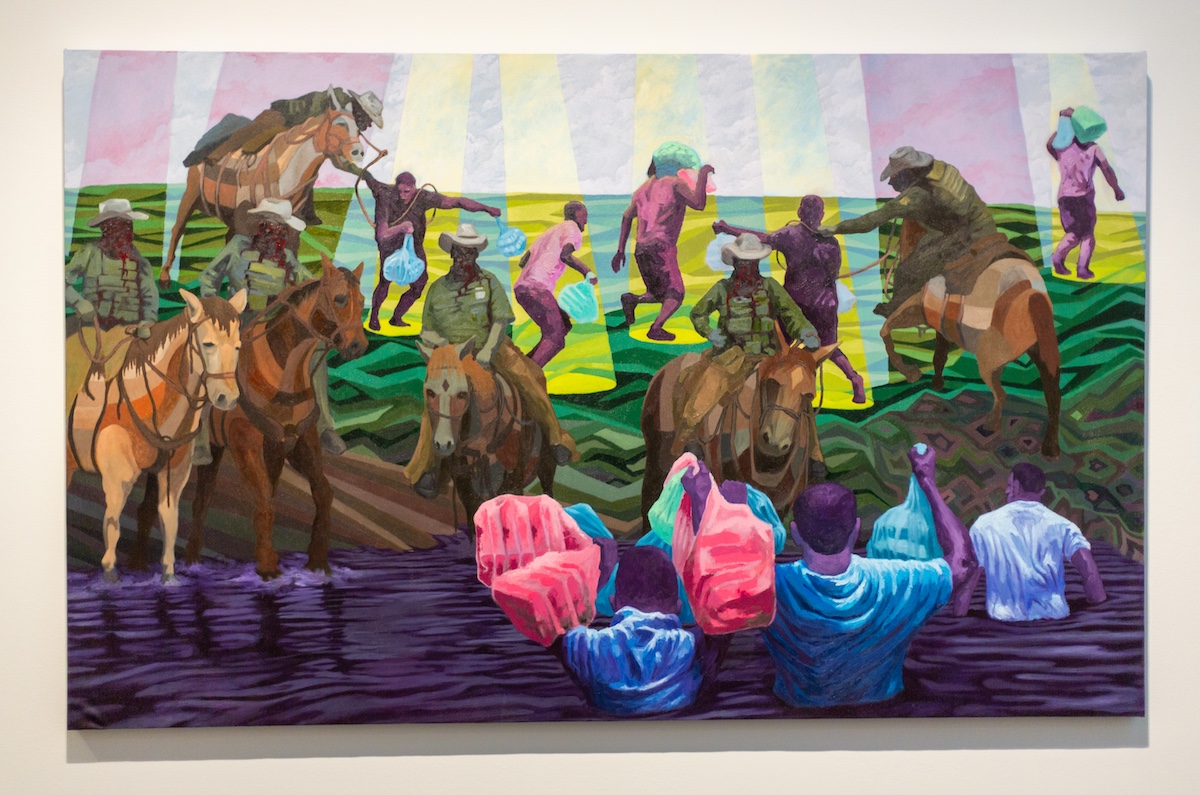
Juan Diego Gaucin, “Haitian Migrant Incident” (2024), oil on canvas (Photo by Vaughn Wheat)
For “Haitian Migrant Incident”, Gaucin was inspired by news photos from 2021 in which border patrol agents on horseback were accused of intimidating and mistreating Haitian migrants attempting to cross into the United States from Mexico.
“I stitched together around 20 different images from the news media surrounding this specific incident,” Gaucin says.
Regarding the bleeding faces of the border patrol officers, Gaucin says, “The idea is that they’re doing as much damage to themselves, spiritually.” The spotlights on the figures in the background are up to interpretation by the viewer, whether they be seen as spotlights or police helicopter lights or divine rays beaming down upon the figures.
“Some people see them as exposed and hunted, and other people see them as kind of protected.”
Gaucin places the perspective of the audience in the water so that the viewer will associate themselves with the migrants rather than the border patrol officers. “How different would the painting be if it was from the point of view on horseback?” he asked.
Immigration is a hotly debated topic in American politics. “It’s being used as, like, a wedge to divide the population against itself,” Gaucin says. (Talk some about the current political situation around immigration). Amidst the political chaos and polarization, Gaucin says he hopes his work will inspire compassion and recognition for the contributions immigrants make to American society.
In the classroom, Gaucin’s approach to art is based more on personal freedom than rigid structure. Assignments are based on students’ creativity and shaped by the work they want to create. “I encourage my students to express themselves as much as they can, as often as they can.”

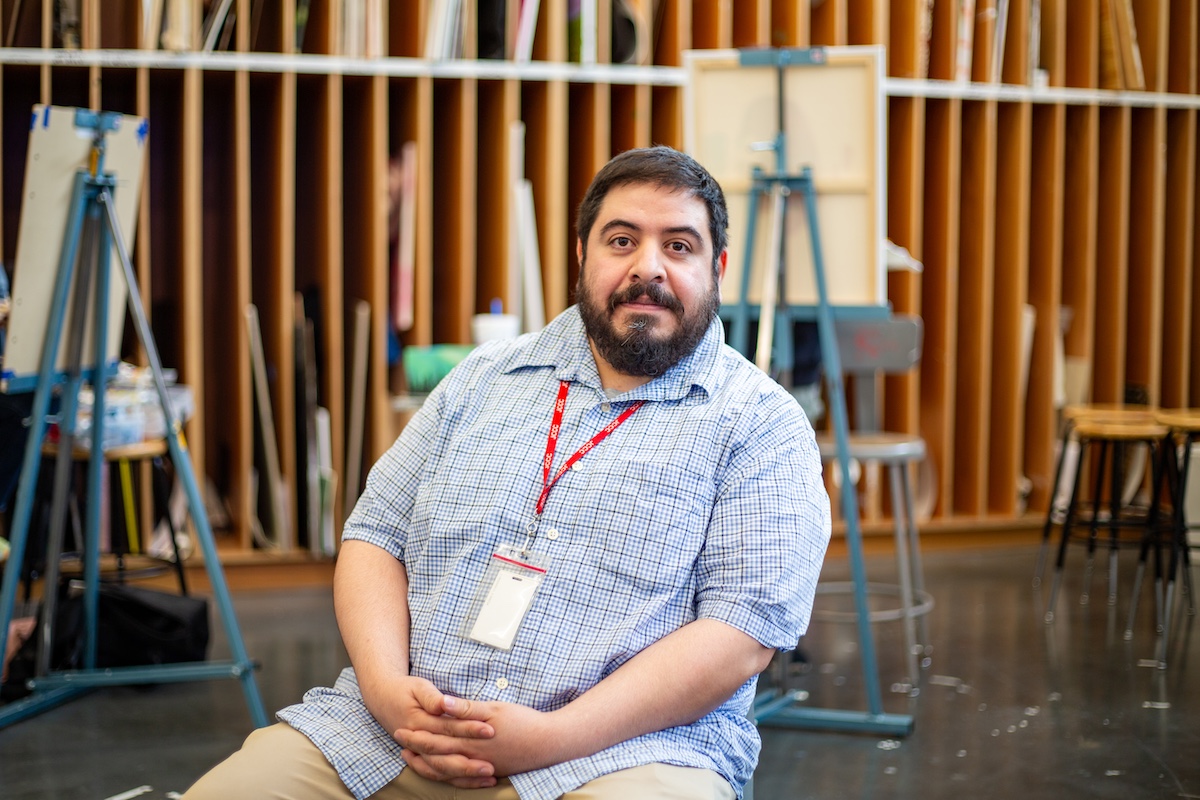
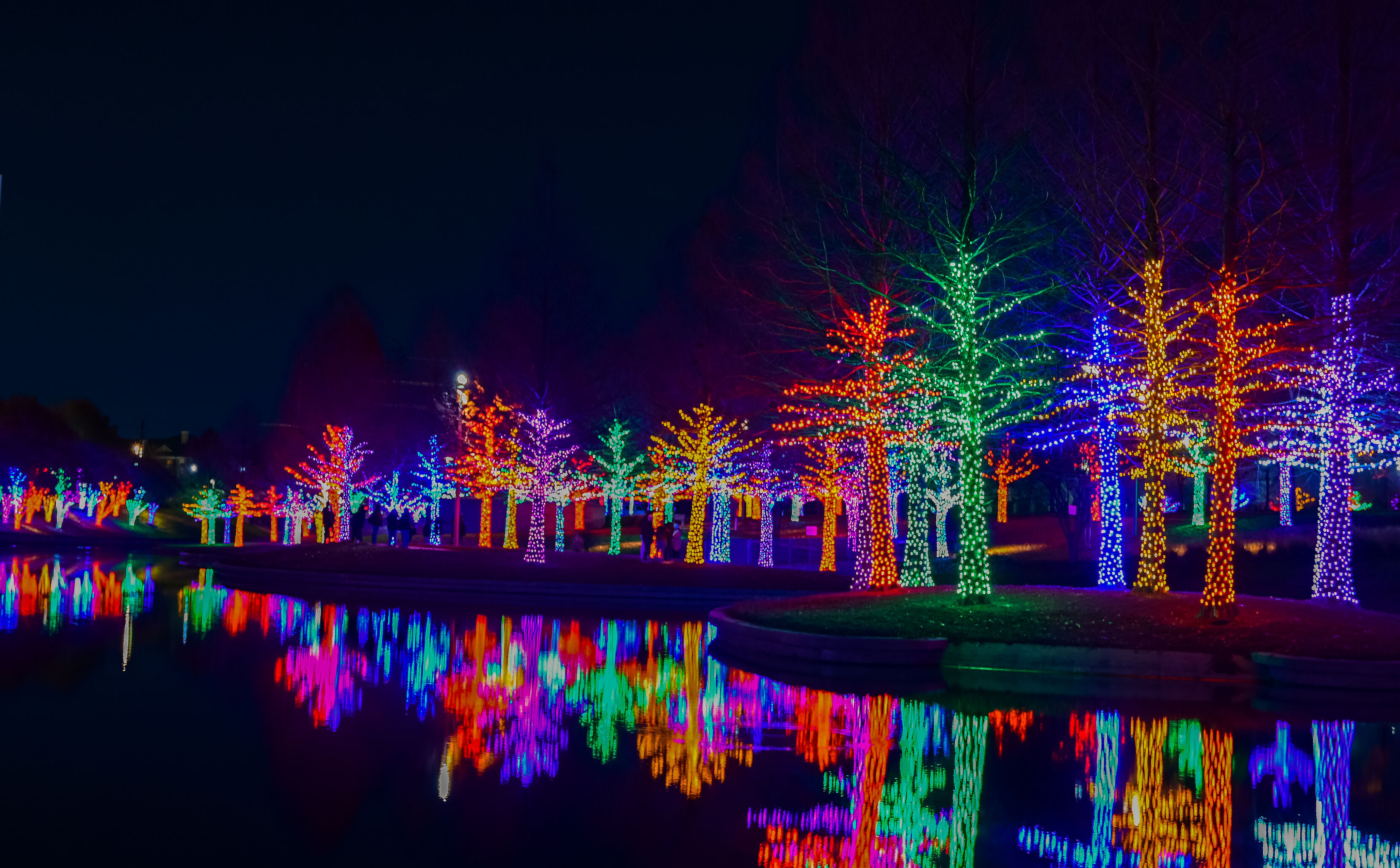
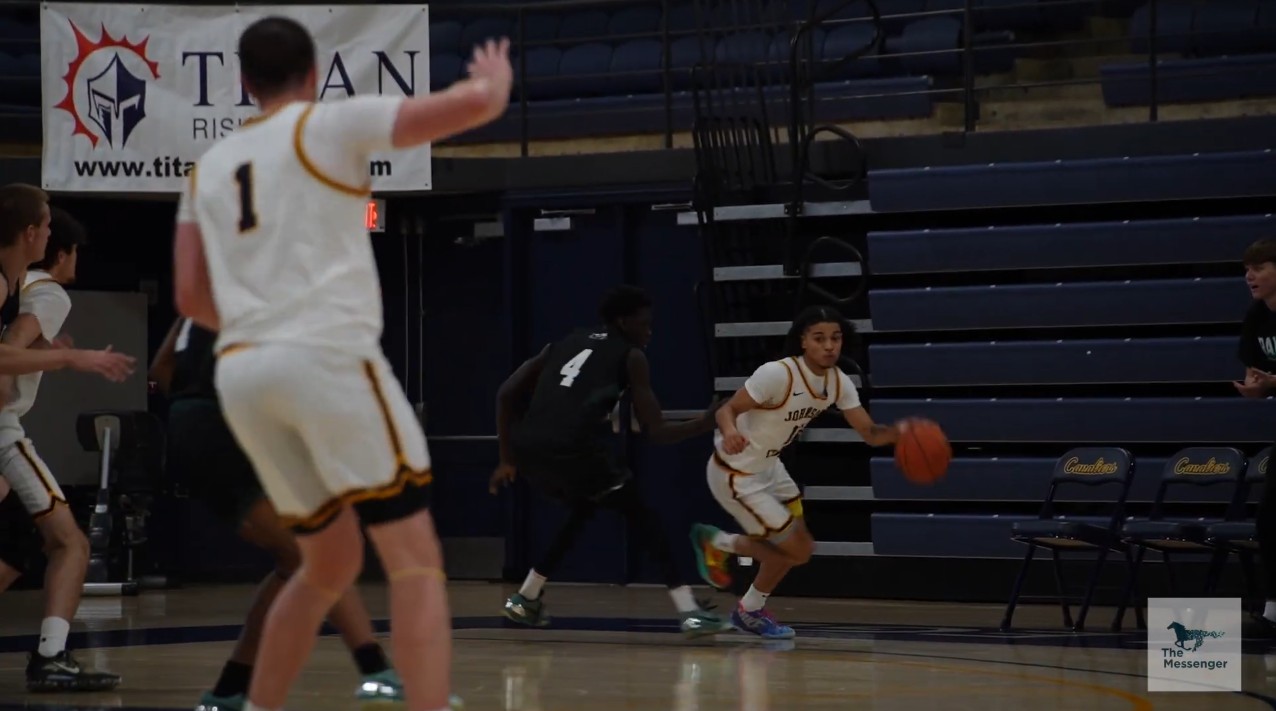

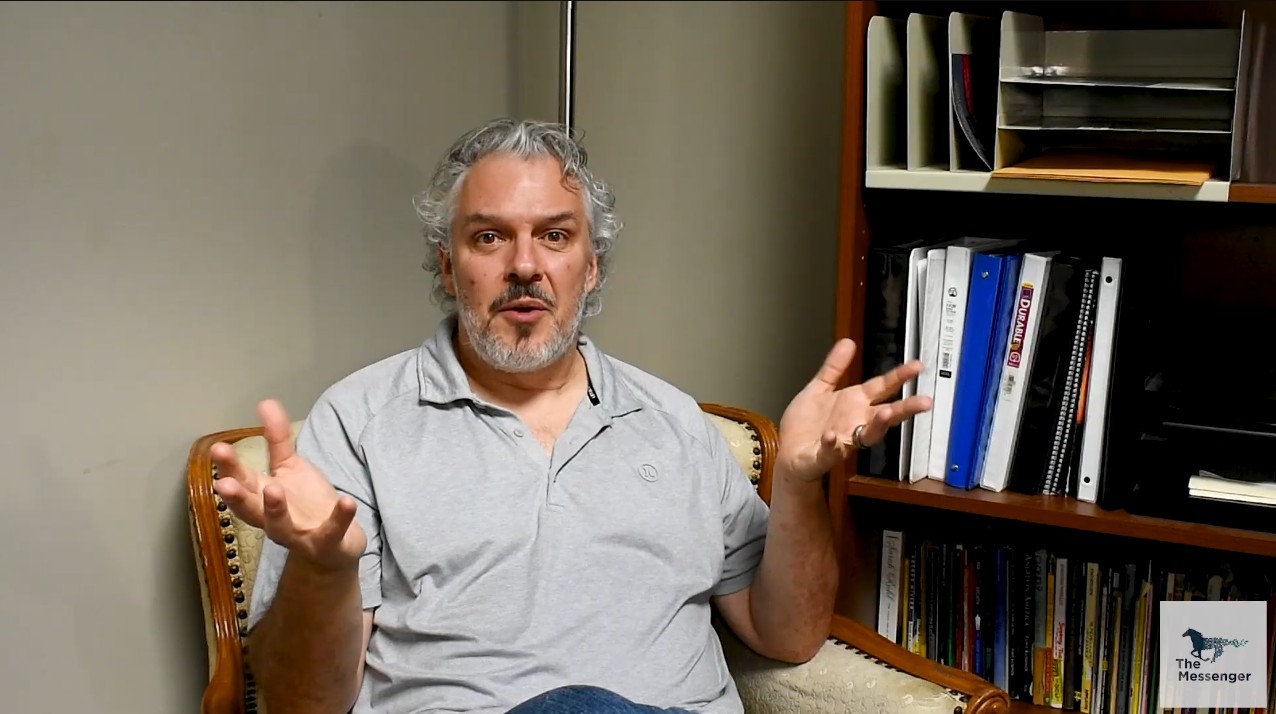
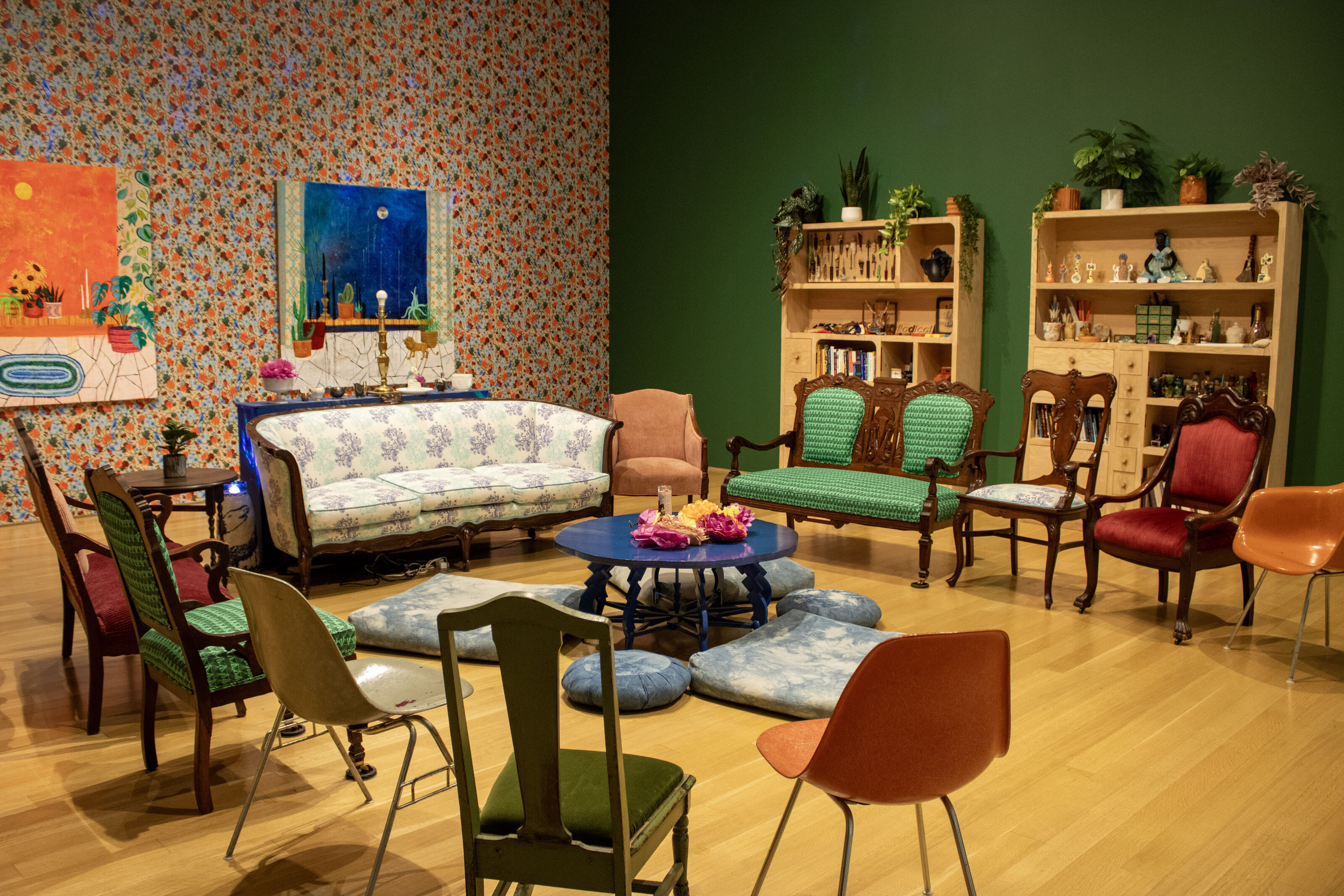





Leave a Reply